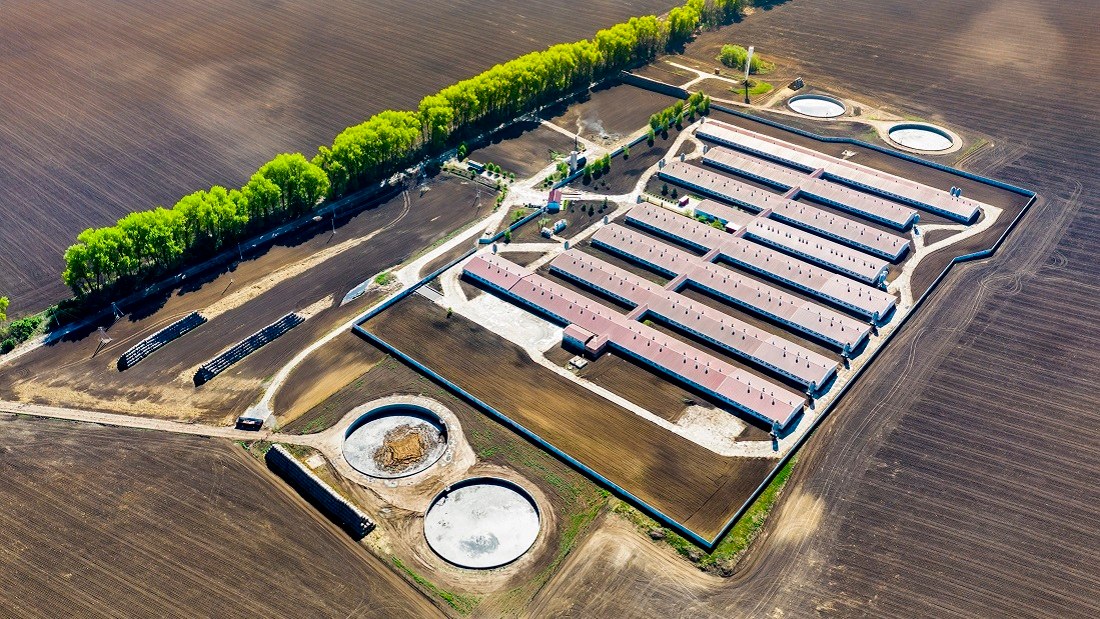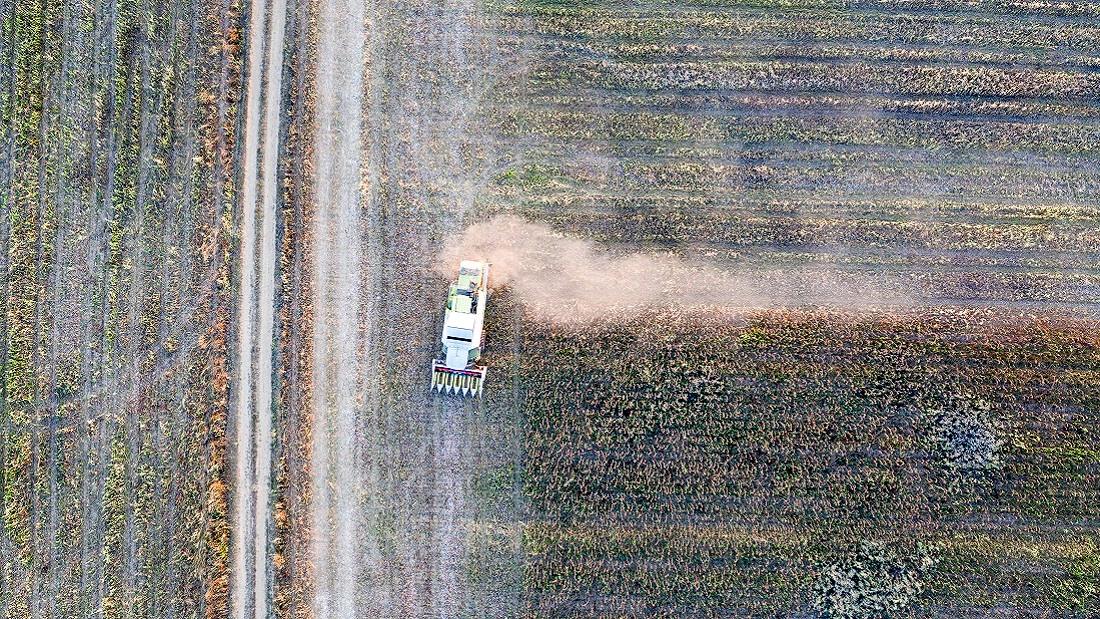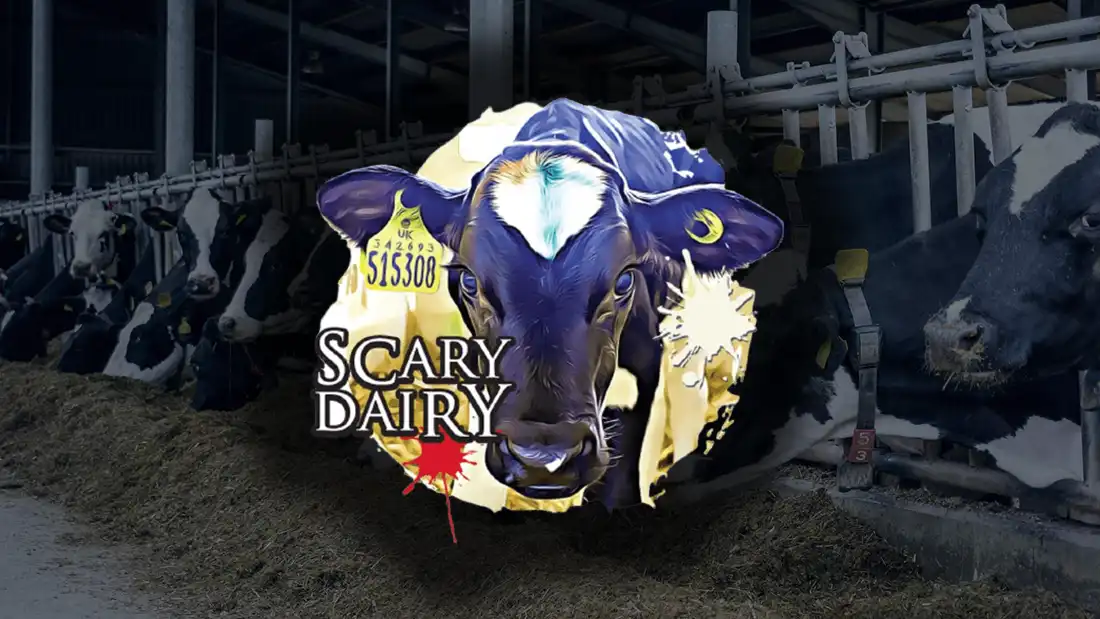Land Use

We are fast running out of space to grow enough food, with three-quarters of the world’s agricultural land already in use for livestock farming. A third of the world’s cereal crop is fed to animals so that people can eat meat, fish and dairy. It’s a hugely inefficient way of producing food. If the world’s population and meat consumption both continue to grow at the current rates, by 2050, global food production will need to increase by 70 per cent to meet demand. However, there simply isn’t enough land for this to happen. Europe can grow enough vegetable protein to feed all its people, but not enough to feed all the animals we eat, so soya and other crops are imported from places like the Amazon rainforest for animal feed – linking steaks and burgers directly to deforestation. The only solution is for us all to go vegan.
Feeding a growing population
“Provision of food is a prerequisite for the functioning of human society.”6Kastner T, Rivas MJ, Koch W et al. 2012. Global changes in diets and the consequences for land requirements for food. Proceedings of the National Academy of Sciences. 109 (18) 6868-6872.
It’s striking how little of the food we produce, actually reaches people. The discrepancy is largely due to food waste and the inefficiency of producing animal-based foods. As the global population expands, current trends in yield improvement (using technology, improved soil management and other strategies) will not be enough to meet the global food demand in 2050. So, further expansion of agricultural land will be required. However, agriculture is the main driver of losses of biodiversity and a major contributor to climate change and pollution, so expansion is undesirable, to say the least. Intensification of factory farming also has disastrous effects on the environment and won’t be enough to meet the projected demand anyway. So, how do we find ways to achieve global food security without expanding agriculture, intensifying production methods or increasing greenhouse gas emissions? The answer is obvious, but too often overlooked: we must reduce the demand for animal foods. Improved diets and decreases in food waste are essential to deliver emissions reductions and to provide global food security in 2050.7Bajželj B, Richards KS, Allwood JM et al. 2014. Importance of food-demand management for climate mitigation. Nature Climate Change. 4, 924-929.
Traditionally, livestock production was based on locally available feed resources such as crop wastes and browse (leaves, twigs and other high-growing vegetation) which has no value as human food. However, intensive livestock farming relies heavily on feed concentrates that are traded domestically and internationally. Currently a third (35%) of the world’s cereal harvest is fed to livestock.8Government Office for Science. 2011. Foresight Project on Global Food and Farming Futures Synthesis Report C1: Trends in food demand and production. https://webarchive.nationalarchives.gov.uk/20121204181824/http://bis.gov.uk/assets/foresight/docs/food-and-farming/synthesis/11-621-c1-trends-food-demand-and-production.pdf However, meat and dairy products, for example, retain only a fraction (about 2.6%) of the feed and pasture biomass fed to them; the remainder is lost in metabolic processes, bones, cartilage, offal and faeces. This shows the energy inefficiency and the land-intensiveness of the production of animal foods.1Bajželj B, Richards KS, Allwood JM et al. 2014. Importance of food-demand management for climate mitigation. Nature Climate Change. 4, 924-929.
As we face the twin challenges of feeding a growing global population while attempting to follow a more environmentally sustainable path, the amount of land and other critical resources devoted to animal agriculture merit serious consideration. Scientists writing in the journal Nature say that an astonishing 75% of the world’s agricultural land is used for raising animals – this includes croplands for animal feed, pasture and grazing. Using highly productive croplands to produce animal feed, they say, represents a net drain on the world’s potential food supply.9Foley JA, Ramankutty N, Brauman KA et al. 2011. Solutions for a cultivated planet. Nature. 478 (7369) 337-342.
Population growth has been the largest driver for agricultural land use change, but dietary changes, in countries such as China for example, where incomes have risen, are a significant and growing driver too. From 1961 to 2011, 65% of the new land that was acquired for agriculture was used for the production of animal-based foods.10Alexander P, Rounsevell MDA, Dislich C et al. 2015. Drivers for global agricultural land use change: The nexus of diet, population, yield and bioenergy. Global Environmental Change. 35, 138-147.

The impact of agriculture
Among the food categories accounting for increasing land demand, animal products are the most important ones. The areas of pasture and grasslands used for livestock are vast, but the actual land requirement for animal food production is even bigger. Some of the land used may be lower quality than cropland but immense in size. So, meat and other animal-based foods are at the centre of discussions on food security and how we me might go about improving how we use the world’s limited resources.1Kastner T, Rivas MJ, Koch W et al. 2012. Global changes in diets and the consequences for land requirements for food. Proceedings of the National Academy of Sciences. 109 (18) 6868-6872.
Current trends in food production and consumption are considered unsustainable.2van Dooren C, Marinussen M, Blonk H et al. 2014. Exploring dietary guidelines based on ecological and nutritional values: a comparison of six dietary patterns. Food Policy. 44, 36-46. The world’s population is expected to increase by two billion people in the next 30 years; from 7.7 billion currently, to 9.7 billion in 2050, according to the United Nations.3UN News, 2019. Growing at a slower pace, world population is expected to reach 9.7 billion in 2050 and could peak at nearly 11 billion around 2100. https://www.un.org/development/desa/en/news/population/world-population-prospects-2019.html Just satisfying the expected human food and animal feed demands would require increasing global food production by 70%.2van Dooren C, Marinussen M, Blonk H et al. 2014. Exploring dietary guidelines based on ecological and nutritional values: a comparison of six dietary patterns. Food Policy. 44, 36-46. Intensification with increased resource use simply will not produce enough to meet the huge demand. We need to find a different way to achieve global food security without expanding crop and pastureland and without increasing greenhouse gas emissions.4Bajželj B, Richards KS, Allwood JM et al. 2014. Importance of food-demand management for climate mitigation. Nature Climate Change. 4, 924-929.
A study evaluating the environmental impact of various diets found that 5-13% of the environmental impact of diet is due to land use changes. This includes deforestation as well as desertification arising from agricultural expansion for products not used to feed the local human population, but instead exported to developed countries as cattle feed.5Baroni L, Cenci L, Tettamanti M et al. 2007. Evaluating the environmental impact of various dietary patterns combined with different food production systems. European Journal of Clinical Nutrition. 61 (2) 279-286. This makes no sense as increasing populations are placing unprecedented demands on agriculture and natural resources. Around a billion people are currently chronically malnourished while our agricultural systems continue to degrade land, water, biodiversity and climate on a global scale.6Foley JA, Ramankutty N, Brauman KA et al. 2011. Solutions for a cultivated planet. Nature. 478 (7369) 337-342.
Europe can grow enough vegetable protein to feed all its people, but not all its farmed animals too. Only 20% of the protein fed to animals in Europe originates in Europe, the rest is imported from other countries, including developing ones, which plays an important role in the further impoverishment of these countries and the exploitation of their environmental resources.5Baroni L, Cenci L, Tettamanti M et al. 2007. Evaluating the environmental impact of various dietary patterns combined with different food production systems. European Journal of Clinical Nutrition. 61 (2) 279-286.Not to mention the malnourishment of their populations.
Changing land use for livestock production is directly linked to deforestation. For the UK, when land use change emissions are considered, about a half the food chain emissions arise outside the UK. So, where your food comes from matters.
Land use changes (mainly deforestation) driven by agricultural expansion is a major source of emissions attributable to global food production and the UK plays an important part. In a study conducted for the conducted for WWF-UK and the Food Climate Research Network, it was estimated that global land use change emissions account for 40% of the emissions embedded in food consumed in the UK. Deforestation is a large source of emissions and expansion of agriculture is the biggest driver.7Audsley E, Brander M, Chatterton J et al. 2009. How Low Can We Go? An Assessment of Greenhouse Gas Emissions from the UK Food System and the Scope to Reduce them by 2050. FCRN-WWF-UK. http://assets.wwf.org.uk/downloads/how_low_report_1.pdf The world’s limited resources simply cannot keep pace with our hunger for animal-based foods.
Replacing fossil fuels in food production with biofuels is not the answer, as biofuel production adds significantly to land use. If all fossil fuels used in food production were replaced by biofuels, it would mean the current land use for food production would have to increase by 25% just to produce the same amount of food we currently produce.8Bryngelsson D, Wirsenius S, Hedenus F et al. 2016. How can the EU climate targets be met? A combined analysis of technological and demand-side changes in food and agriculture. Food Policy. 59, 152-164.
The amount of land required to produce different foods varies widely, with animal foods requiring by far the most. Overall, the pattern for land use associated with different types of diet is similar to that for greenhouse gas emissions, with lower-emitting diets having lower land use and higher-emitting meat and dairy-rich diets requiring the most land. This is because feed conversion efficiencies, which largely influence greenhouse gas emissions, are also closely linked to land use.8Bryngelsson D, Wirsenius S, Hedenus F et al. 2016. How can the EU climate targets be met? A combined analysis of technological and demand-side changes in food and agriculture. Food Policy. 59, 152-164. In other words, the amount of land required to feed one meat-eater, could feed many vegans.
The environmental pressure, in terms of land use, per kilogram of protein produced varies widely with animal foods, especially meat from ruminants. One study found that vegetables and meat substitutes require less than 10 m2 per year for each kilogram of protein while meat from extensively farmed (grazing-based) ruminants requires over 2,000 m2 per year.9Nijdam D, Rood T and Westhoek H. 2012. The price of protein: Review of land use and carbon footprints from life cycle assessments of animal food products and their substitutes. Food Policy. 37, 760-770.
The carbon footprint and land use of protein-rich foods per kilogram of product.
| Food | Carbon footprint (kg CO2e per kg) | Land use (m2 per year per kg) |
| Beef | 9-129 | 7-420 |
| Pork | 4-11 | 8-15 |
| Poultry | 2-6 | 5-8 |
| Eggs | 2-6 | 4-7 |
| Mutton and lamb | 10-150 | 20-33 |
| Cheese | 6-22 | 6-17 |
| Vegan meat substitutes | 1-2 | 2-3 |
| Dried pulses | 1-2 | 3-8 |
Source: 9Nijdam D, Rood T and Westhoek H. 2012. The price of protein: Review of land use and carbon footprints from life cycle assessments of animal food products and their substitutes. Food Policy. 37, 760-770.
European dairy production uses around three times more arable land per kilogram of protein than vegetable protein.8Bryngelsson D, Wirsenius S, Hedenus F et al. 2016. How can the EU climate targets be met? A combined analysis of technological and demand-side changes in food and agriculture. Food Policy. 59, 152-164. The bucolic image of a contented cow chewing the cud in a pastoral setting is a myth. Most beef and dairy cows have a very different experience in their miserable, short lives. The demand for ever-cheaper meat ensures that. Globally, grazing-based systems contribute very little to the human food supply, accounting for less than 1% of its total food energy.10Herrero M, Wirsenius S, Henderson B et al. 2015. Livestock and the environment: what have we learned in the past decade? Annual Review of Environment and Resources. 40, 177-202. This contrasts sharply with the commonly held notion that cows only feed on pastures with little or no alternative value for human food production.
One study compared the environmental impacts of a range of diets including vegan, vegetarian, fish-eating, replacing beef with chicken, following health guidelines, the Mediterranean diet and meat reduction. They found that more sustainable diets could reduce both greenhouse gas emissions and land use considerably. Most of the scenarios achieved smaller environmental footprints by replacing animal foods with plant foods, although replacing meat with dairy had little effect. Of all the scenarios, the vegan diet was the most effective at reducing the environmental impact, with a 45% reduction in land use and a 51% drop in greenhouse gas emissions.11Aleksandrowicz L, Green R, Joy EJ et al. 2016. The Impacts of Dietary Change on Greenhouse Gas Emissions, Land Use, Water Use, and Health: A Systematic Review. PLoS One. 11 (11) e0165797.
This falls in line with a study from the University of Oxford assessing the impact of different foods on the environment. They created a huge dataset based on almost 40,000 farms in 119 countries, covering 40 food products that represent 90% of all food eaten, and assessed the impact of these foods, from farm to fork, on land use, greenhouse gas emissions, freshwater use (weighted by local water scarcity), air pollution (acidification) and water pollution (eutrophication). This enabled them to assess the environmental costs of different foods and identify those that have the most impact. They found that moving from current diets to a diet that excludes animal products has transformative potential, reducing food’s land use by 76%, including a 19% reduction in arable land. Food’s greenhouse emissions could be reduced by 49%, acidification by 50%, eutrophication by 49% and scarcity-weighted freshwater withdrawals by 19%.12Poore, J and Nemecek, T. 2018. Reducing food’s environmental impacts through producers and consumers. Science. 360. 987-992.
For the United States, where meat consumption is three times the global average, dietary change has the potential for an even greater effect on food’s greenhouse gas emissions, reducing them by 61-73%. 12Poore, J and Nemecek, T. 2018. Reducing food’s environmental impacts through producers and consumers. Science. 360. 987-992.
Lead author of the study Joseph Poore says: “The reason I started this project was to understand if there were sustainable animal producers out there. But I have stopped consuming animal products over the last four years of this project. These impacts are not necessary to sustain our current way of life. The question is how much can we reduce them and the answer is a lot”.
This research received strong praise from other food experts. Given that the food supply chain creates 26% of all manmade greenhouse gas emissions,12Poore, J and Nemecek, T. 2018. Reducing food’s environmental impacts through producers and consumers. Science. 360. 987-992. simply changing the way we eat offers enormous potential for combating the climate crisis and repairing some of the damage we have done.
Effects of land use changes are starting to be included in estimates of greenhouse gas emissions and carbon footprints of food production. Their omission has previously led to serious underestimates, particularly for meat.

Land use in the UK
Currently, we do not use land well in the UK, neither for food production nor for environmental benefit. Because meat, fish, eggs and dairy production is so inefficient, almost half of the UK’s total land area is used just for animal agriculture13Hayek MN and Miller SM. 2021. Underestimates of methane from intensively raised animals could undermine goals of sustainable development. Environmental Research Letters. 16, 063006. – either for grazing or animal feed crops. In arable areas, 55 per cent of cropland is used to grow animal feed.13Hayek MN and Miller SM. 2021. Underestimates of methane from intensively raised animals could undermine goals of sustainable development. Environmental Research Letters. 16, 063006.This is a waste of resources, perpetuates a cycle of environmental degradation, and, is completely unnecessary.
Sheep and cattle grazing in the UK are often portrayed as being a ‘natural’ part of the landscape but they are not. They damage the land and the wider environment in many ways – destroying native vegetation, damaging river banks and contaminating waterways with faecal waste. Grazing sheep, for example, can be particularly damaging to the hillsides and uplands where tree and shrub roots break up the soil, improving the ability and capacity of soil to absorb water, reducing the risk of erosion. Grazing sheep destroy this important vegetation and compact the soil, causing water to run off quickly and soil to break down. For these reasons, grazing livestock contribute to landslides and flooding.
If you take a wider view and consider the amount of land, both domestically and abroad, to produce food for the British diet, the UK currently uses over 16 million hectares of arable land.14WWF. 2020. Bending the Curve: The Restorative Power of Planet-Based Diets. WWF Report.One hectare is about the size of Trafalgar Square in London. Much of this land is used to produce animal feed. If everyone went vegan, this figure would fall below 10 million. In addition to arable land, the UK uses 22 million hectares of grazing land for the UK diet. This would be reduced to zero if everyone went vegan.14WWF. 2020. Bending the Curve: The Restorative Power of Planet-Based Diets. WWF Report.
Go vegan, save land
Animal-based foods are the main driver of the environmental impacts of food, on land and water use, energy use, greenhouse gas emissions and climate change.
Scientists say that the consequences of a shift towards a vegan diet would be many, all of them positive: a substantial influence on reducing climate change, a decrease in energy use and water waste, a lessening of deforestation and desertification and a much more rational use of soil – leading to a dramatic decrease of chemicals used in agriculture.15Baroni L, Berati M, Candilera M et al. 2014. Total Environmental Impact of Three Main Dietary Patterns in Relation to the Content of Animal and Plant Food. Foods. 3 (3) 443-460.
There is much that governments can do in order to speed up the transition towards a more environmentally sustainable and healthier diet, we just need them to stop ignoring the evidence!




